History always hides something very special and so do ancient buildings. Today we will share about one of the most outstanding works in Vietnamese history. It is the Independence Palace.
Besides what is recorded in the pages of books or stories, this work also brings many other surprises. In this article, Fito wants to share with readers the profound meaning of the roads running around the Independence Palace. Let’s exploring together.
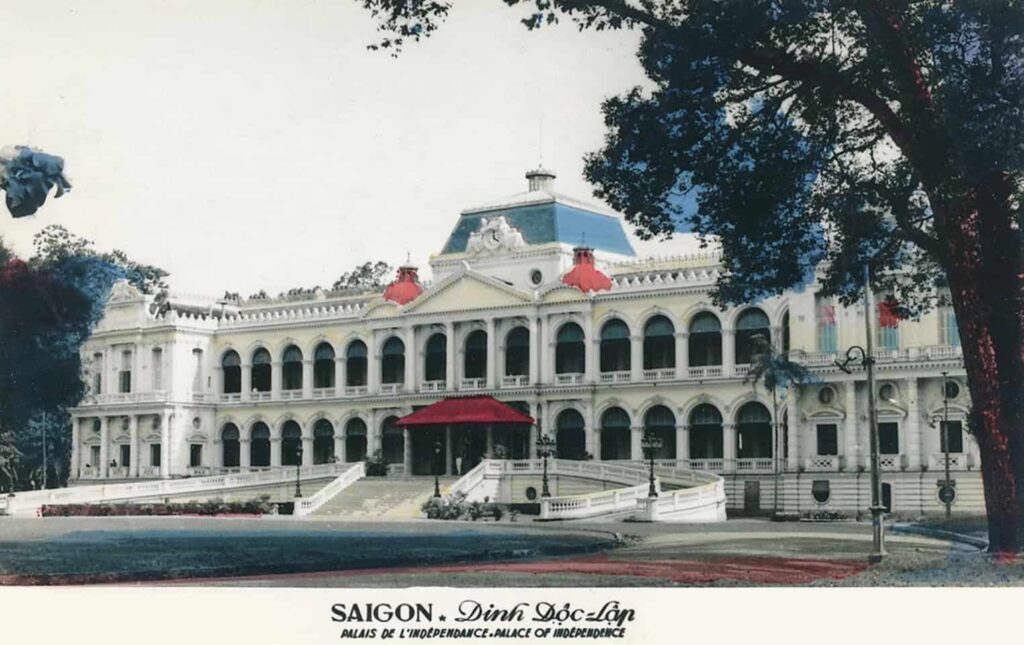
Mục lục tóm tắt
When registering as a country at the United Nations, a country must identify five basic pillars as follow:
- Set of national insignia-national flag-national anthem-emblem
- Territory (Bordering with neighboring countries)
- Subjects (Ethnicities existing in the country)
- Culture (Identity) and history
- Language (official use).
For that reason, around the Independence Palace, the heart of the national capital of the Republic of Vietnam. And the city of Saigon, streets that reflect these pillars of spirit have been patrolled.
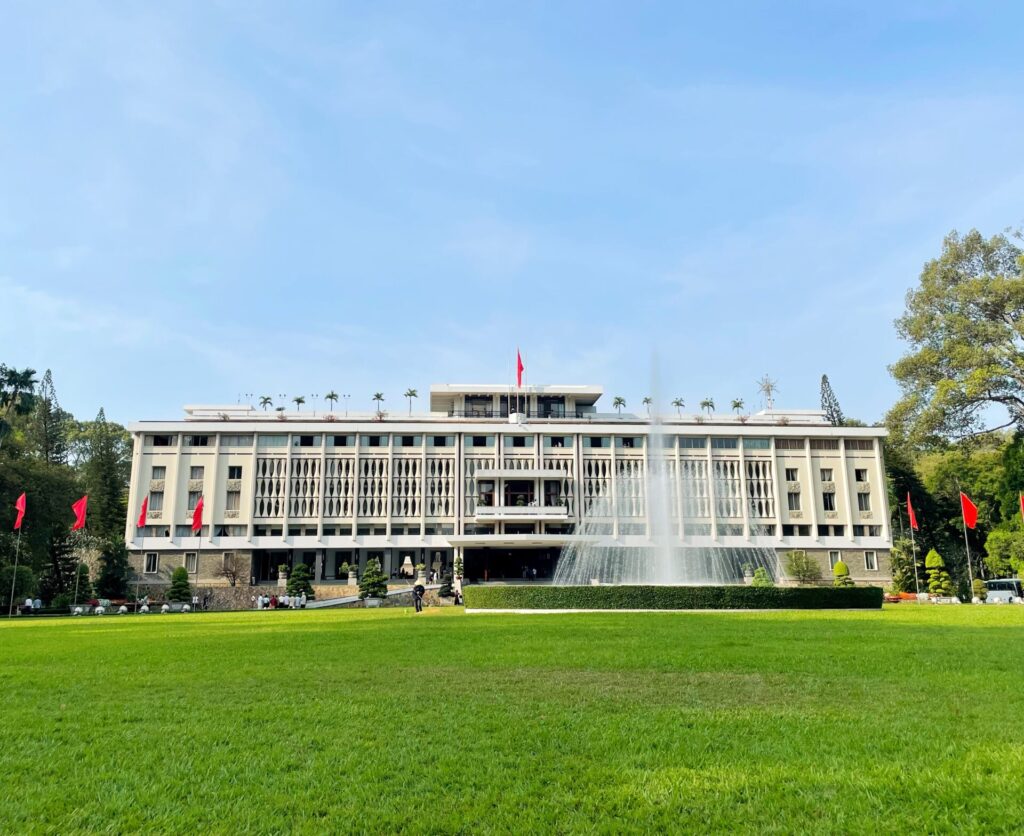
Cong ly Street & Thong Nhat Street (Independence Palace)
These two roads are not naturally named like that. Behind it, along with the Independence Palace, hides a deep value. Thus, the Independence Palace together with Cong Ly Street (Justice Street – now Nam Ky Khoi Nghia Street) and Thong Nhat Street (Reunification Street – now Le Duan Street) affirmed three important goals of the government:
“Independence – Justice – Reunification“
Nguyen Du Street & Hong Thap Tu Street (Left – Right of Independence Palace)
To the left of Independence Palace, this is the name of Nguyen Du Street and it still keep to this day. It refers to a great poet who is well-know as a representative of Vietnamese culture.
To the right of the Independence Palace is Hong Thap Tu Street (now Nguyen Thi Minh Khai Street). The Red Cross (now – the Red Cross) has the Sino-Vietnamese name of the International Committee of the Red Cross (ICRC) established in 1863. This is a long-standing humanitarian organization. The largest in the world working to protect human life and health, helping people injured in armed conflicts, regardless of nationality, ethnicity, religion, creed, class, or political opinion.
These two roads reflect the spirit of national cultural harmony and universal human values of the Republic of Vietnam.
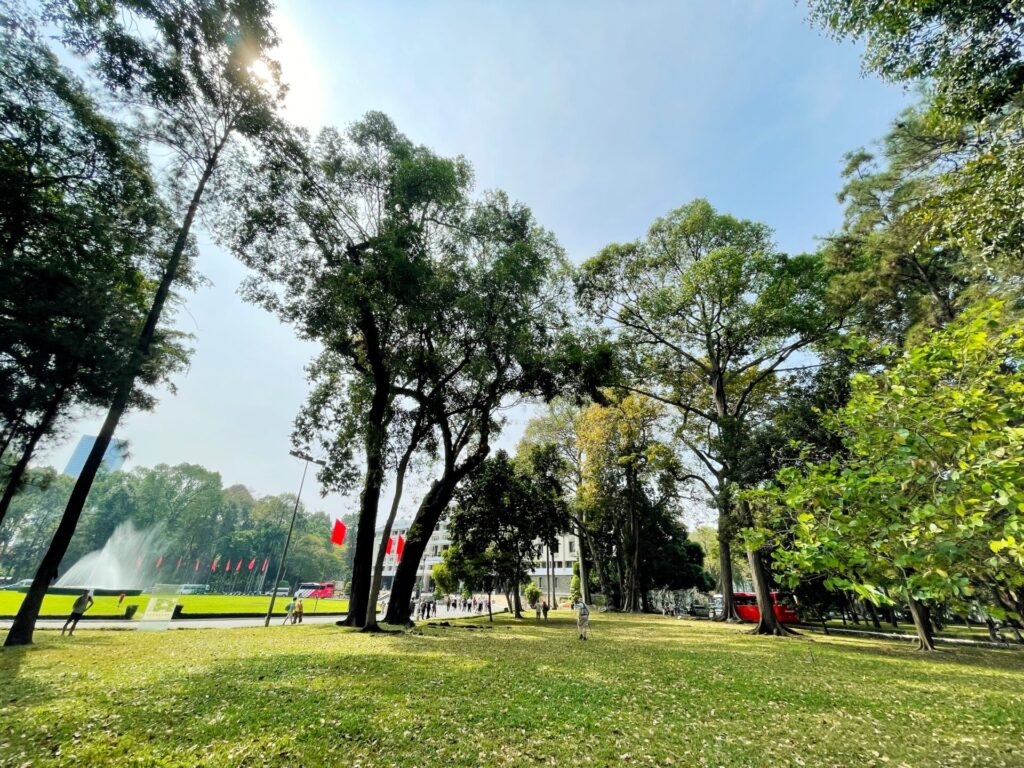
Huyen Tran Cong Chua Street & Han Thuyen Street & Alexandre de Rhodes Street
Behind the Independence Palace is Huyen Tran Cong Chua street. The road named after a woman who made great contributions in the early Southern career so that the southern territory of the Fatherland has been expanded for many years to Cape Ca Mau.
In front of the Independence Palace are two roads: Han Thuyen street (on the right) and Alexandre de Rhodes street (on the left) running parallel to the main road, Thong Nhat street.
These are the literary streets of Saigon, with two typical representations: a Nom Language (Original Language) and a Quoc Ngu Language (official language).
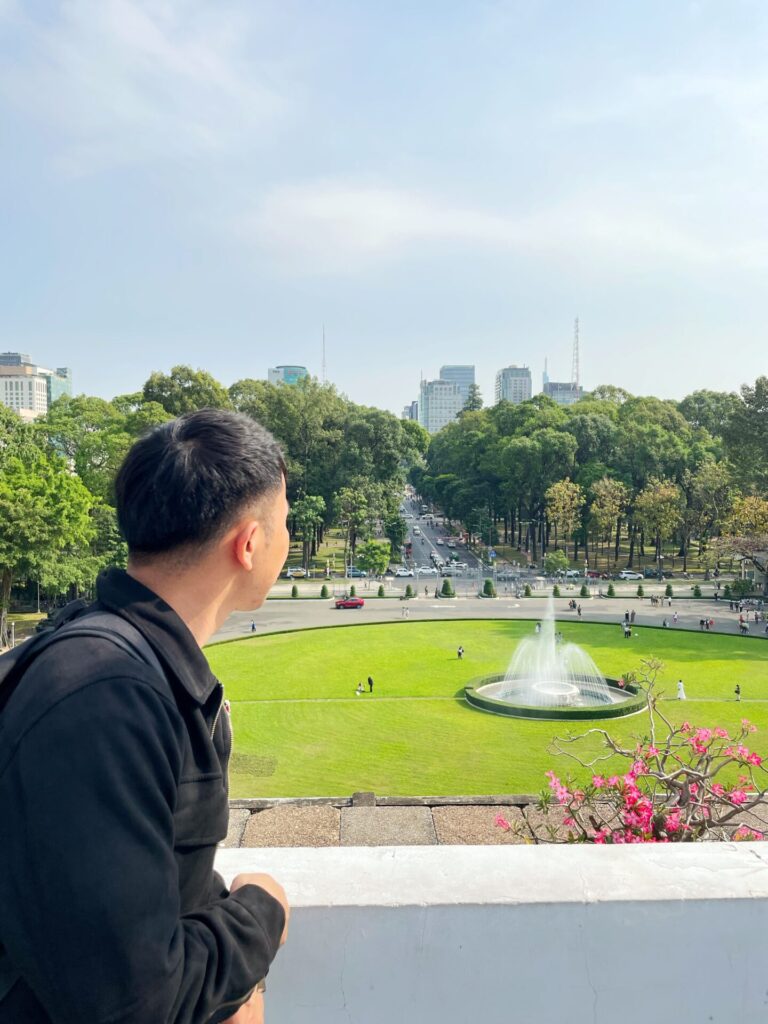
Overview of Han Thuyen Street
Han Thuyen Street during the French colonial period, around 1871 was named Hong Kong Street. On February 24, 1897, it changed to Amiral Page Street. From March 22, 1955, the Saigon government changed it to Han Thuyen Street, and that name has been kept until now.
Han Thuyen (1229-?) whose real name is Nguyen Thuyen. So far, people have not identified his original hometown, but many people believe that he is from Lai Ha village, Thanh Lam district, Nam Sach province, Lang Giang highway (now in Bac Ninh province). Han Thuyen obtained his doctorate in 1247 and became an official of the Ministry of Pictures under Tran Nhan Tong. He is famous for his anecdote of writing the Crocodile Literature article to eliminate crocodiles in the Red River and being good at Nom poetry.
Han Thuyen was the first person to use the rule of Duong poetry in Nom poetry, so later generations called Nom poetry according to Duong Luat (Poetry style) as Han Luat (Poetry style). He has considered the person who developed and popularized the Vietnamese Nom Language. Parallel to the Chinese language, the Nom language became an important means in the creative life of the intelligentsia; representing the love of culture; the Vietnamese language; and the spirit of maintaining Vietnamese quality throughout the history of the Vietnamese nation among the national intellectuals.
Overview of Alexandre de Rhodes
As for the Rue Alexandre de Rhodes. During the French colonial period (June 2, 1871), this street has called Rue de Paracels (Paracel Road). October 16, 1871, it was changed to Colombt Street; March 22, 1955, the Saigon government changed it to Alexandre de Rhodes street; April 4, 1985, the new government changed its name to Thai Van Lung Street. However, fortunately, now Alexandre de Rhodes has regained the name for this road.
Alexandre de Rhodes (1591-1660) was a Jesuit (Dong Ten) missionary and also a French linguist. He made an important contribution to the process of spreading Catholicism in Vietnam and forming the Quoc Ngu language. Although he inherited the results of studying and practicing Vietnamese from many missionaries before him to systematize and build a relatively complete set of Quoc Ngu language for Vietnamese people, with two works he compiled, Dictionarium Annamiticum Lusitanum et Latinum (Vietnamese-Portuguese-Latin Dictionary), and Catechismus (The Eight-Day Teaching) in Quoc Ngu language were first published in Rome in 1651, which made Vietnamese people consider him a great man for generations. The most important part in the formation of the Quoc Ngu language, a script currently used officially in Vietnam.
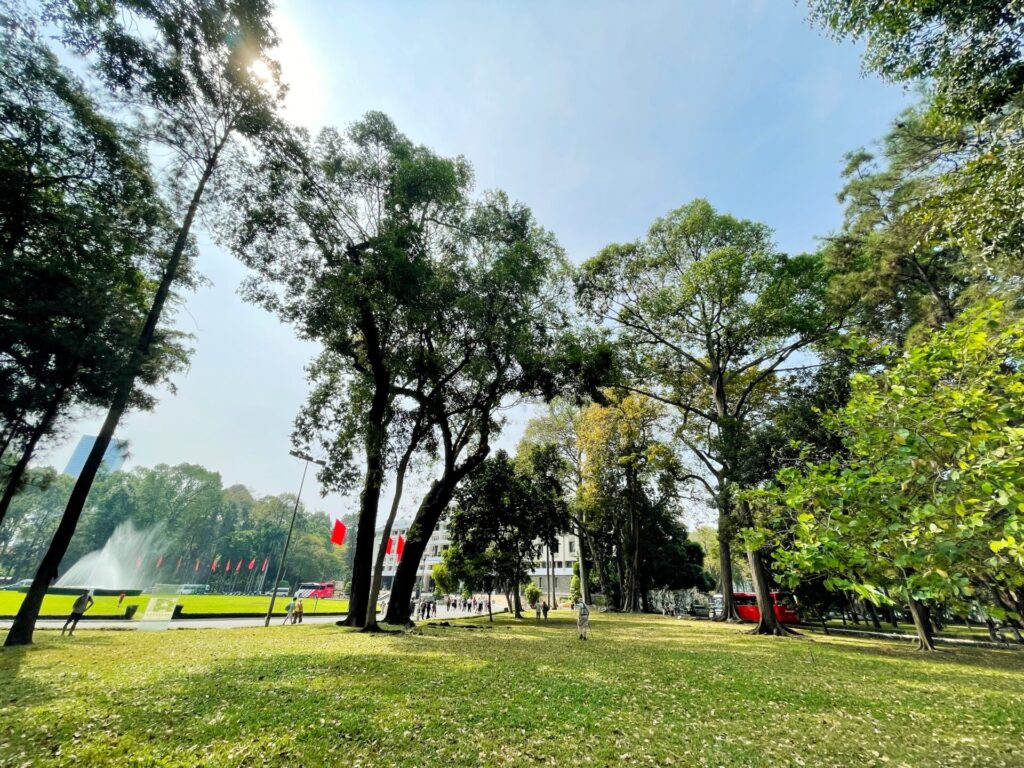
The naming of the street is very important, because it preserves the traditional values. And reminds the ancestral heritage so that the next generation can be grateful, and continue to study,…
Author: Tue Lang
Translator: Fito
